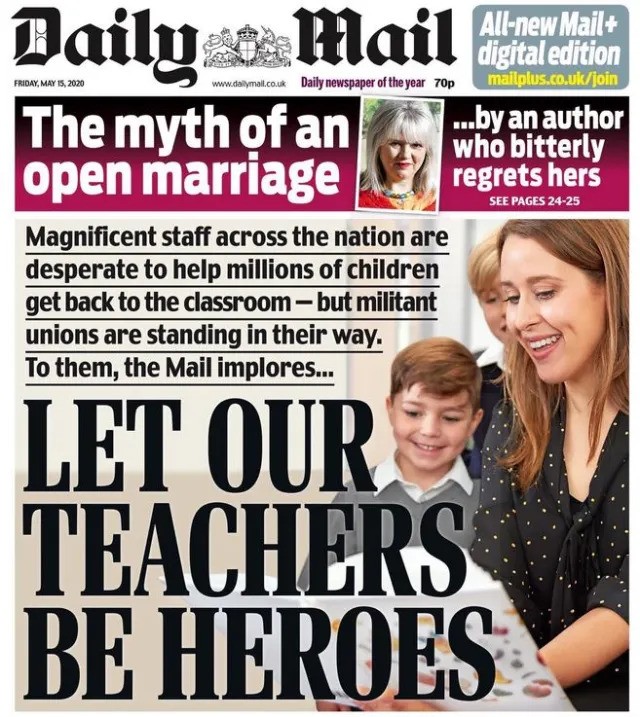| CC4HH
Lockdown life stories
This project was conducted by Tom Thickbroom and Mike Brazier.
Jump to: Covid-19 timeline | The NHS during lockdown | Education during lockdown
The Covid-19 Pandemic has affected everybody in Britain, no matter who they are, where they are from or what they do for a living. The pandemic and subsequent lockdowns have been a once in a lifetime event and experience for us all, and all of our lives have changed in different ways as a result.
We were tasked with interviewing members of the general public about their experiences with Covid-19 and lockdown. We chose to focus our attention on NHS workers and people working in education. These groups have had different experiences: NHS workers were on the frontline, whilst many teaching staff worked from home and taught classes online using video call sites. We asked our respondents how Covid 19 had affected not only their work but also their home and family life.
One particular concern was the impact of Covid 19 and lockdowns on mental health, when people were restricted in their direct contact with family and friends.
Covid-19 timeline
18 March 2020 Government announces all schools in the country will shut except for those looking after children of key workers and vulnerable children.
23 March 2020 Prime Minister (PM) announces first UK lockdown, requiring people to ‘stay at home’
1 June 2020 phased re-opening of schools in England.
1 September 2020 Majority of schools in England, Wales and Northern Ireland reopen for the autumn term.
31 October 2020 PM announces second lockdown in England to prevent a ‘medical and moral disaster’ for the NHS: schools remain open.
15 December 2020 PM says Christmas rules will still be relaxed but urges the public to keep celebrations ‘short’ and ‘small’.
4 January 2021 PM indicates children can return to school after the Christmas break, but warns restrictions in England will get tougher.
6 January 2021 England enters third national lockdown: schools closed.
8 March 2021 return to school for primary and secondary school students in England.
The NHS during lockdown
Effects on mental health
The lockdowns affected many people’s mental and physical health as well as having an impact on their relationships with family and friends. Our first questions were aimed at this issue when interviewing NHS staff. A key pattern emerged on the impact of the lockdowns on the mental health of NHS staff. They were in close contact with the virus and saw its effects on patients first-hand.
An ICU nurse employed on a Covid ward described her working life as ‘overwhelming’ this had a huge psychological Impact: “people at home don’t know what you’ve seen that day; I could have seen literally the worst thing”.
A nurse who was redeployed in a desperate attempt to deal with the rising number of patients requiring hospital treatment described her experiences and the impact on her mental health: “it’s been more difficult just constantly being in the same sort of environments”. She worked in close proximity to Covid patients and then had to return home to children and was worried about them contracting the virus.
Many NHS staff working on the frontline were negatively affected in terms of their mental health. Others could only imagine the horrors of what NHS staff had seen during the day, with patients’ health constantly deteriorating and too many cases resulting in death.
PPE Issues
A nationwide issue at the beginning of the Covid 19 pandemic was the shortage of personal protective equipment (PPE) such as medical masks and gloves that should have been available to NHS staff.
A BBC investigation concluded that the government had failed to stockpile or purchase enough PPE to deal with the pandemic and to keep all NHS staff safe and Covid-free. Our nurse respondents, however, said that they had not experienced a shortage of PPE in their hospitals.
One said “we’ve always been equipped, I think we’re very lucky and we’ve had the equipment”. Another nurse explained the various types of PPE NHS workers were told to wear and the difference between the levels of PPE, “we were being told that actually, no, you don’t need to get up to level three, level two is sufficient for certain procedures. You can still continue with level two”. Level two is basic surgical mask and gloves, whereas level three is a full hazmat type suit.
The PPE issue was seemingly an issue that affected all NHS workers across the country, but the workers we interviewed seemed to be adequately supplied with equipment at their hospitals.
BBC Investigation and Article.
Support and retention on ICU wards
Many NHS staff members were retrained and re-positioned within their hospitals. They were moved away from specialist wards and placed in intensive care units (ICUs) because of the number of people contracting Covid-19 needing hospital treatment. These required constant care from doctors and nurses.
One nurse respondent was redeployed onto overpopulated ICU wards to help deal with the ever increasing number of Covid patients. When asked about the support and training she received following redeployment. She said “I’ve not really been given much support to be honest. I’ve been thrown in the deep end with our training data for the redeployment and then that was it-really on my own”.
Many of those who were redeployed received lime training and some may still not be fully trained to work on an ICU ward to this day. Another nurse redeployed during the pandemic said, “we’ve had to adapt and work incredibly hard and with the utmost attention to detail This presents a major issue not only in the NHS itself but also for the funding of the NHS- redeploying medical staff to extremely important ICU wards during a pandemic without providing adequate training could have serious consequences not only for patients but also for workers on ICU wards.
Issues with ‘clap for heroes’ and the 1% pay rise

During the first lockdown many of us showed our appreciation for those working on the NHS frontline and in Covid wards by taking part in the weekly (Thursday 8pm) Clap for Carers. A less successful clap for Prime Minister Boris Johnson took place when he returned to his duties after contracting the virus and needing hospital treatment himself.
Public appreciation of the NHS was undermined by the government offer of a 1% pay rise to NHS nursing staff, despite the fact that they had remained on the frontline throughout the pandemic, putting their own lives at risk everyday.
When asked about her opinion on the ‘Clap for Carers’ gesture, one nurse said, “I think the idea at the beginning was nice and it was heartwarming”. When asked about the 1% pay rise however, she said “I know a lot of people will say they’re not happy with it; it’s not enough we deserve more”. The 1% offer was extremely controversial. Many believe that NHS staff deserve more for their contributions during the pandemic. NHS staff ensured that those who contracted Covid-19 were made comfortable and they were treated to the best of the staff’s abilities. The controversial pay offer could be summed up by a single quote from a Sky News article “The government is facing a furious backlash after calling for health care staff in England to be restricted to a pay rise of 1%.”
Education during lockdown
Effects on mental health
During lockdown, the gap between the “haves’ and have nots’ widened substantially. Arguably, those with a dedicated home office or with access to safe outside space had an easier time than those who did not. Working parents who previously had office space at work were left working and homeschooling children at dining room tables or hastily constructed desks In bedrooms. Students who previously had access to libraries, classrooms and other work spaces saw those spaces and resources made inaccessible.
The ever changing state of lockdown made planning increasingly difficult. The loosening of restrictions towards the end of summer 2020 offered a ray of false hope. Many faced a setback when restrictions were reimposed. Furthermore, many university students faced the loss of their part-time jobs. While furlough offered some a small amount of financial stability, the fact their workplaces were closed for the majority of lockdown meant that students found themselves stuck at home with lime contact with others.
Many parents have talked about the effect lockdown had on younger children, unable to see friends and taught by untrained and overworked parents. Whilst the students we interviewed managed to avoid this, there is no doubt that many others were not so lucky. Parents have talked about children regressing, fearing going back to school and interacting with others, or simply retreating into themselves.
The mental health issues arising from the way this lockdown has been handled will affect a whole generation of young people.
Re-opening schools
The re-opening of schools was hotly contested. Teachers came under intense scrutiny for their reluctance to return to full in-person teaching. Some newspapers denounced teachers as lazy’ without recognizing that the vast majority had to adjust their teaching methods during the pandemic. The number of students returning to classrooms during the second lockdown saw teachers now trying to teach two sets of children simultaneously, having to find ways to connect these two groups and keeping a balance between in-person and online teaching.

The general consensus from our interviews was that schools were re-opened too early, and keeping them open while infection rates rose compounded the problem. This viewpoint comes after having seen the cost of these decisions. Parents and students both acknowledged that, especially amongst younger children, there was an anticipation to return to schools after the first lockdown. Seemingly students’ need for greater interaction with their classmates also played into the decision to open schools and keep them open as other parts of the country closed down at the start of winter.
Distance learning

The move to online and blended learning required a major adjustment by students, teachers and parents. Many parents found themselves torn between working from home and providing enough support for their children to keep up with work set by schools. Schools continued to provide access to children of key workers, but the facilities and quality of learning changed.
Especially during the second lockdown in November 2020, with the widening label of essential workers, schools were put under great stress to provide enough space for these children whilst maintaining a safe environment for teachers and students. While the first lockdown was far more hands off as teachers adjusted to new ways of teaching the second lockdown came with more experience and allowed teachers to provide for students and new ‘parent teachers’ much more effectively. Pre-recorded video lessons. live check-ins and work that could the completed online bridged the gap and provided students with some limited interaction. Teachers experimented with new online tools with platforms such as Microsoft Teams and Google Classroom allowing more personalised interactions between teachers and students.
One university lecturer we interviewed used YouTube in his lessons, producing pre-recorded videos to introduce students to his classes and to upload lectures when technical issues halted live sessions.
Education after lockdown
Throughout the pandemic the phrase ‘new normal’ was used repeatedly, both to talk about the continuing changes to keep everyone safe and the possible world that may subsequently emerge.
More regular use of distance learning in higher education had been talked about well before the pandemic and some critics are concerned that recent events may be used as a further testing ground.
Many teachers feel that distance learning has stopped them from being able to fine-tune their lessons to the students in the room. Many students kept cameras off and even microphone use to a minimum. The absence of visual cues left teachers struggling to know if students were understanding the material or even paying attention. For students, the multiple distractions of home learning meant a daily struggle to engage with lessons. Spending a full day learning in the same room used for relaxing and sleeping increased restlessness.
There are benefits to distance learning, especially in Universities. Guest lecturers and invited speakers sometimes travel long distances to give a talk, which could now be presented online.
Distance leaming has environmental, productivity and mental health benefits. It could also help in emergency situations, when lecturers or students are unable to attend a class, due to travel restrictions of medical reasons, for example. Distance learning can help students who have been forced to stay off school for a prolonged period to keep up with lessons, but there may now be an end to students’ beloved snow days.



